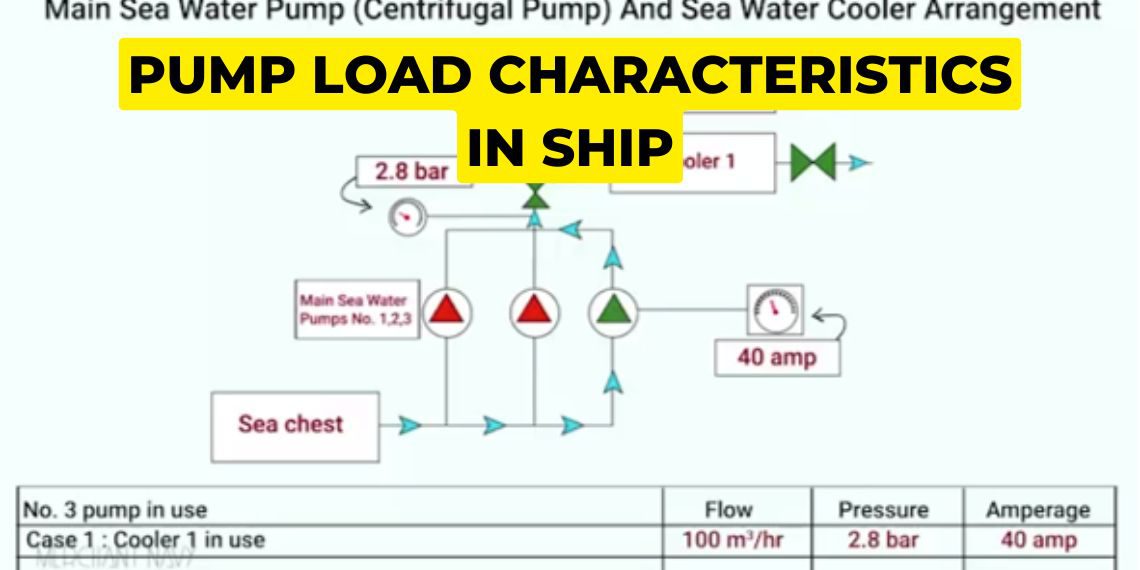Pump load characteristics of both gear and centrifugal pump in ship
By knowing the load characteristics of a pump we can easily understand the working of the pump.
1. Gear pump load characteristics with example:
Gear pump is used for transferring heavy fuel oil and its motor current is directly proportional to pump discharge pressure. In a gear pump discharge pressure is the most important factor. If in gear pump it loses suction slowly the discharge pressure will decrease and in gear pump if the discharge pressure decreases the current amperage will reduce.
Let’s see few case studies to understand it in a better way. Look at the diagrams to identify when flow is taking place:
Case 1: When the pump is not running, the pressure is zero and the amperage is also zero.
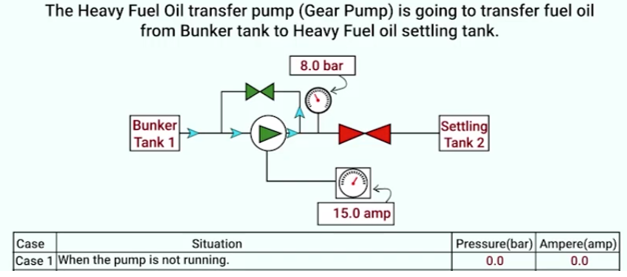
Case 2: When the pump starts running normally.
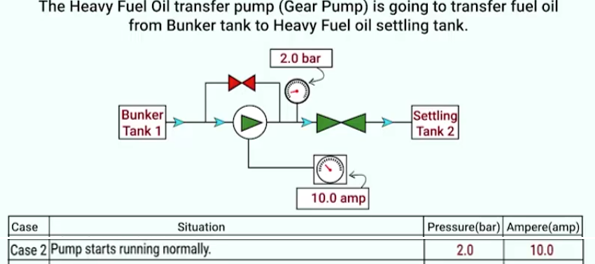
Case 3: Now somebody by mistake closes the valve and pressure starts increasing.
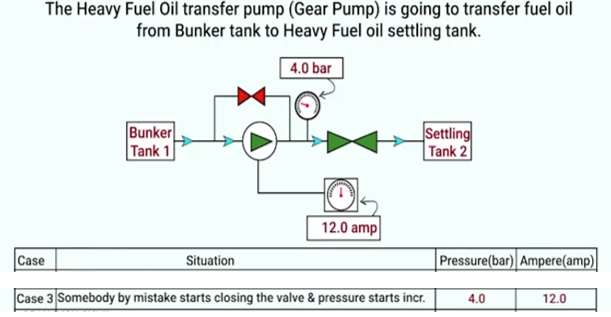
Case 4: Pressure increases up to 8 bars by the time valve is fully shut and relief valve lifts.
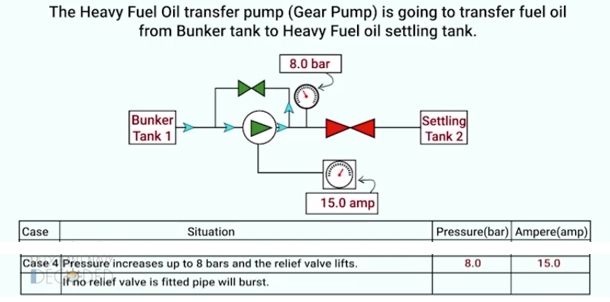
Now in this case the relief valve has lifted and no more pressure will increase due to which the pipe or the pump casing will not burst.
2. Centrifugal pump load characteristics with example:
A centrifugal pump is used in Sea water pumps. In Gear pump pressure decides motor amperage, but in centrifugal pump it is the flow of fluid through the eye of the impeller that decides motor amperage. In centrifugal pump when it loses suction, the flow rate decreases causing motor amperage to decrease.
Let’s see few case studies to understand it in a better way. Look at the diagrams to identify when flow is taking place:
Case 1: Only No 3 seawater pump is running and one cooler is in used.
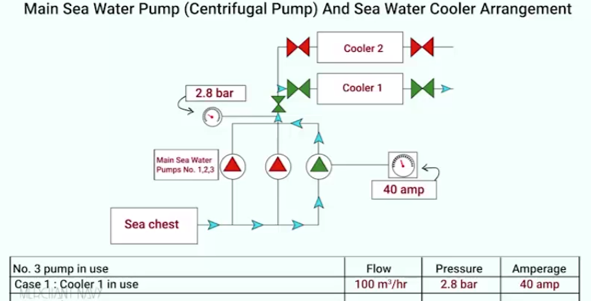
Case 2: Only No 3 seawater pump is running and both the coolers are in used.
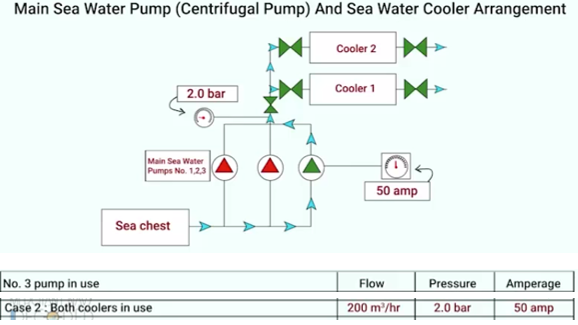
In this case we can see that the flow has increase but the pressure has decreased still the current amperage has increases because in centrifugal pump only flow matters.
Case 3: Both coolers not in use

In this case both the coolers are not in use so no flow is taking place but the pressure is decreasing but still the current amperage drops to 10 amps. This clearly signifies that amperage is dependent in flow and not on pressure for centrifugal pump.
Note:
If you want to learn more about this topic, we suggest checking out our Combo package with the given link https://www.merchantnavydecoded.com/courses/c/ . It’s a great way to dive deeper into the subject through video explanations. This package covers all the important details and presents them in an easy-to-understand format. Watching the videos will help you grasp the topic better and make learning more enjoyable. So, we highly recommend giving our Combo package a try to enhance your knowledge on the subject.
Disclaimer :- The opinions expressed in this article belong solely to the author and may not necessarily reflect those of Merchant Navy Decoded. We cannot guarantee the accuracy of the information provided and disclaim any responsibility for it. Data and visuals used are sourced from publicly available information and may not be authenticated by any regulatory body. Reviews and comments appearing on our blogs represent the opinions of individuals and do not necessarily reflect the views of Merchant Navy Decoded. We are not responsible for any loss or damage resulting from reliance on these reviews or comments.
Reproduction, copying, sharing, or use of the article or images in any form is strictly prohibited without prior permission from both the author and Merchant Navy Decoded.


